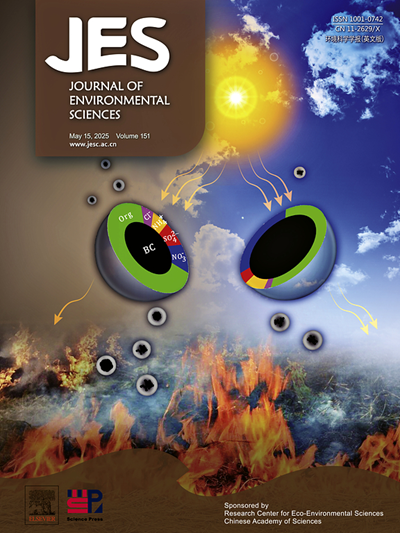Using degrading endophytic bacteria to detoxify the phthalic acid esters in crops from contaminated soil
IF 5.9
2区 环境科学与生态学
Q1 ENVIRONMENTAL SCIENCES
引用次数: 0
Abstract
Phthalic acid esters (PAEs) are widely released into the environment due to industrial and agricultural activities. This poses significant risks, not only to crops grown on contaminated soil but also to humans. PAEs enter the human body through the food chain, causing potential health hazards. Endophytic bacteria have demonstrated a significant potential as effective bioremediation agents, with specialized mechanisms of PAEs degradation. Endophytic bacteria such as Rhodococcus, Pseudomonas and Sphingomona recognize root exudates, adhere to and penetrate root surfaces, and ultimately colonize crops. They form symbiotic relationships with crops, obtaining nutrients and habitats from crops, meanwhile, promoting plant growth and health through hormone production, nutrient regulation, and the suppression of pathogenic microorganisms. Furthermore, endophytic bacteria efficiently degrade PAEs in soil-crop systems through synergistic interactions with indigenous rhizosphere microflora and regulatory effects on enzyme activity in crops. Here, we review the role of endophytic bacteria in the bioremediation of PAEs-contaminated crops and soils. In addition, we discuss the scarcity of endophytic bacterial strains with a confirmed ability to degrade PAEs, and underscore the lack of the research on the mechanisms of PAEs degradation by these bacteria. This review also points out that future study should investigate the molecular mechanisms underlying the interaction between endophytic bacteria and PAEs to offer novel insights and solutions for environmental protection and sustainable agricultural development.
利用内生降解菌解毒污染土壤中作物中的邻苯二甲酸酯
由于工业和农业活动,邻苯二甲酸酯(PAEs)被广泛释放到环境中。这不仅对种植在受污染土壤上的作物构成了重大风险,而且对人类也构成了重大风险。PAEs通过食物链进入人体,造成潜在的健康危害。内生细菌已经证明了作为有效生物修复剂的巨大潜力,具有特殊的PAEs降解机制。红球菌、假单胞菌、鞘膜单胞菌等内生细菌识别根部渗出物,附着并穿透根部表面,最终定植作物。它们与作物形成共生关系,从作物中获取养分和栖息地,同时通过产生激素、调节养分、抑制病原微生物等方式促进植物生长和健康。此外,内生细菌通过与本地根际微生物群的协同作用和对作物酶活性的调节作用,有效地降解土壤-作物系统中的PAEs。本文综述了内生细菌在paes污染作物和土壤生物修复中的作用。此外,我们讨论了具有确定降解PAEs能力的内生细菌菌株的缺乏,并强调了这些细菌降解PAEs的机制研究的缺乏。指出今后应进一步研究内生细菌与PAEs相互作用的分子机制,为环境保护和农业可持续发展提供新的思路和解决方案。
本文章由计算机程序翻译,如有差异,请以英文原文为准。
求助全文
约1分钟内获得全文
求助全文
来源期刊

Journal of Environmental Sciences-china
环境科学-环境科学
CiteScore
13.70
自引率
0.00%
发文量
6354
审稿时长
2.6 months
期刊介绍:
The Journal of Environmental Sciences is an international journal started in 1989. The journal is devoted to publish original, peer-reviewed research papers on main aspects of environmental sciences, such as environmental chemistry, environmental biology, ecology, geosciences and environmental physics. Appropriate subjects include basic and applied research on atmospheric, terrestrial and aquatic environments, pollution control and abatement technology, conservation of natural resources, environmental health and toxicology. Announcements of international environmental science meetings and other recent information are also included.
 求助内容:
求助内容: 应助结果提醒方式:
应助结果提醒方式:


